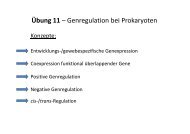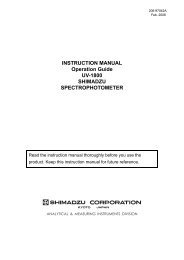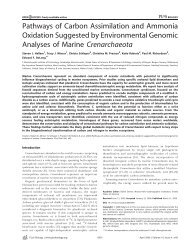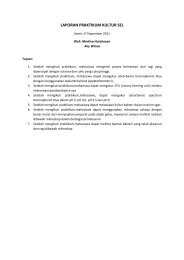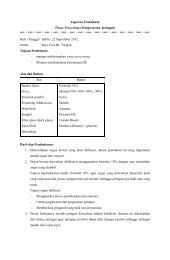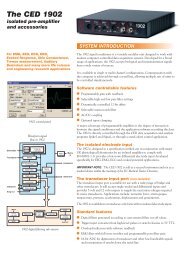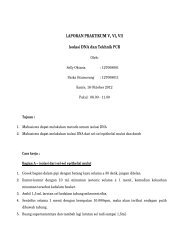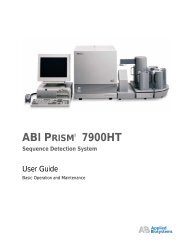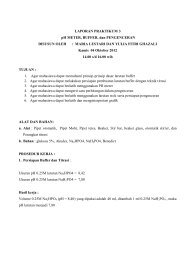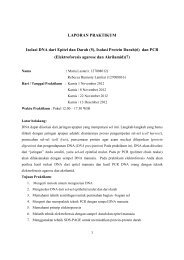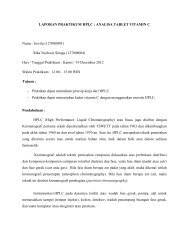Lab Chore Protocols - OpenWetWare
Lab Chore Protocols - OpenWetWare
Lab Chore Protocols - OpenWetWare
You also want an ePaper? Increase the reach of your titles
YUMPU automatically turns print PDFs into web optimized ePapers that Google loves.
• <strong>Lab</strong>’s Building and Room Number (66-425)<br />
• Number of Biosharps Bins to be Collected<br />
If you send them an email on Wednesday there is still a good chance they will<br />
pick up the bins, but not always.<br />
5. On Wednesday evening place the filled, sealed biosharps bin(s) out in the<br />
hallway.<br />
6. On Thursday, EHS will come by to remove the filled bin(s). They will only come<br />
by if you sent them an email on Tuesday (or earlier). When they remove the<br />
filled bins they will replace them with empty ones. EHS can come by anytime<br />
between 7:30am and 5:00pm to pick up the filled bins.<br />
7. Move the new empty bins into the lab and place them in the lab appropriately.<br />
Decontaminating the Ethidium Bromide (EtBr) Waste<br />
The EtBr waste should be decontaminated when the 5L EtBr waste container (found at<br />
the gel station in the lab) is 90-95% full. When treating the EtBr waste, wear the<br />
appropriate personal protective equipment (gloves, safety glasses, lab coat) and be very<br />
careful not to get any of the waste on your skin or to splash any of it on the benchtop.<br />
EtBr, as a DNA-binding molecule, is a strong mutagen. Be sure to change gloves if they<br />
get wet with EtBr waste and before going back to other labwork. Try not to spread EtBr<br />
around the lab.<br />
Currently, the lab uses the Extractor EtBr System from Whatman. From the company’s<br />
website:<br />
The Extractor EtBr System is a one-step filtration funnel device for the rapid removal of ethidium<br />
bromide from gel-staining solutions.<br />
This disposable unit contains an activated carbon matrix, which removes > 99% of ethidium bromide from<br />
electrophoretic buffer quickly and easily. Each device can decontaminate up to 10 liters of gel-staining<br />
solution. After filtration, the decontaminated solution can be safely poured down the laboratory drain.<br />
The extractor funnel device fits most standard laboratory flasks and bottles (neck size 33 to 45 mm), and<br />
the unit includes a cap for storage between uses. the polypropylene housing is chemically resistant to<br />
organics. also included in the package are glass fiber prefilters, which remove gel pieces and other debris to<br />
avoid premature clogging of the carbon filter.<br />
1. Obtain an EtBr filtration funnel and two white prefilter disks from the cabinets<br />
underneath the sink near the gel station. If there is a partially-used EtBr filtration<br />
funnel be sure to use that one. Also find a 1L Erlenmeyer flask. Place these<br />
items near the vacuum pump, or bring the pump over the gel station on a cart.<br />
3



